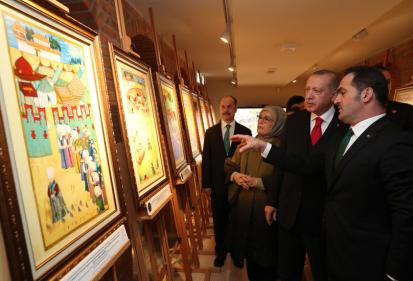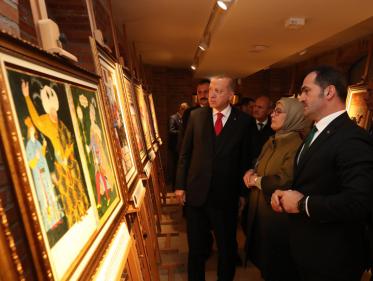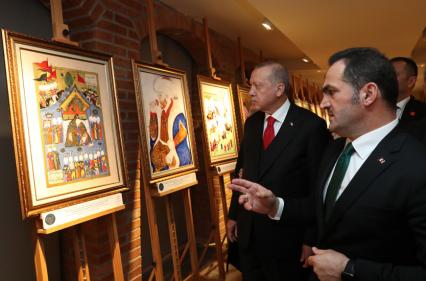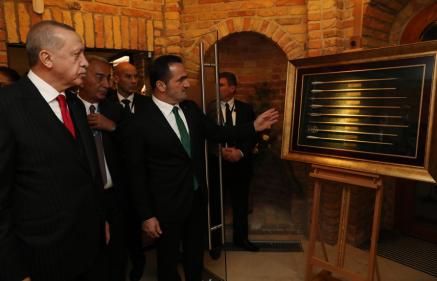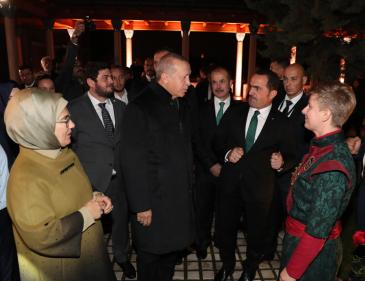Ottoman Era Turkish Archery in Miniatures
President Recep Tayyip Erdoğan and First Lady Emine Erdoğan, having flown to Hungary on November 7, 2019 to attend the 4th Meeting of the High Level Strategic Cooperation Council, have visited the recently renovated Gül Baba Tomb and the "Ottoman Era Turkish Archery in Miniatures," launched under the Kemankeş (Archer) Project.
During his visit to Gül Baba Tomb, President Erdoğan was accompanied by Culture and Tourism Minister Mehmet Nuri Ersoy, Family, Employment and Social Services Minister Zehra Zümrüt Selçuk and Industry, Technology Minister Mustafa Varank and President's Chief Adviser İbrahim Kalın.
Erdoğan also visited the "Ottoman Era Turkish Archery In Miniatures" exhibition within the Tomb complex.
Launched with the aim of studying and promoting the historical, sportive, artistic, cultural and educational characteristics of the traditional Turkish archery and raising archers in this field for contributing to intercultural dialogue, the Kemankeş Project has become quite popular in Hungary.
The Kemankeş Project was kicked off on October 19, 2017 with the motto "Turkish Archery on the World Stage" by Yunus Emre Institute in collaboration with the Archers' Foundation and has so far been implemented in 26 countries around the world. The project raised 94 certified archers from different countries through Turkish Archery Training of Trainers programs held in Istanbul in 2017, 2018 and 2019. Thousands of people have been introduced to Turkish archery at the exhibitions and events held in various countries.
The "Turkish Archery in Miniature," curated by the Archers' Foundation and sponsored by Gül Baba Tomb Foundation and Yunus Emre Institute contains 42 miniatures (illustrations) taken from 12 manuscripts in the Topkapı Palace Library Collection. The miniatures date back to 15-18 centuries and are attributed miniaturists Sinan Bey, Mehmed Bey, Mehmed Bursevi, Nakkaş Osman, Nigari and Levni, who were members of Ehl-i Hiref (Community of the Craftsmen), and worked for the Ottoman palace. The miniatures depict the sultans who were archers, battlefields, left-handed archer troops positioned next to sultans, archery as a sport, auxiliary archery equipment, archer and bow making shops and Archers' Lodge, showcasing the place of archery in Turkish history.

